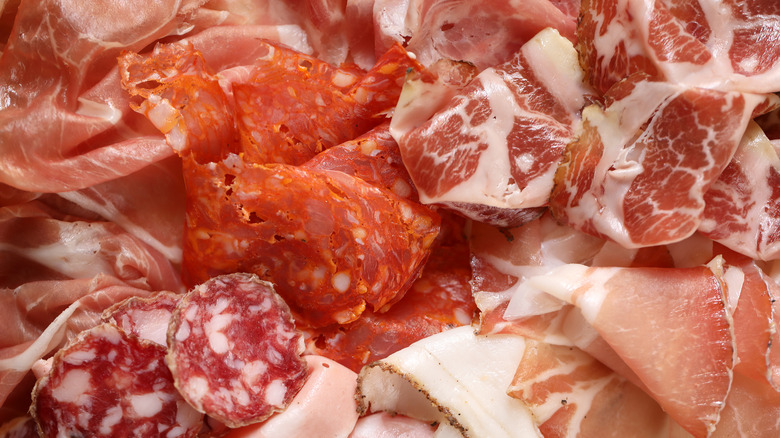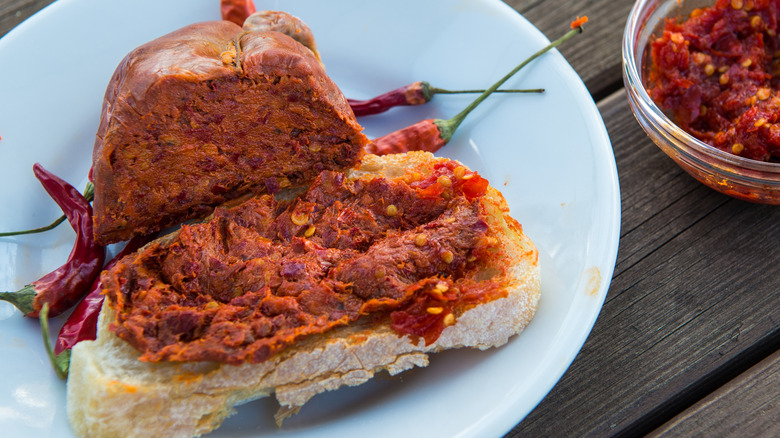This Legendary Italian Sausage Starts From Mere Scraps
Italy is both well-known and well-loved for its food. While it may be home to fan favorites like pizza and fresh pasta, it's also famous for many of the essential cured meats you should know about. But believe it or not, there's an underrated meat that isn't as mainstream as, say, a slice of prosciutto or capicola (or gabagool, if you're a "Sopranos" fan). The meat in question is called 'nduja, said to have been born in Southern Italy — in the heart of Calabria, to be exact. It's a fiery, slightly funky sausage that's unique for its spreadable texture, which almost melts when heated. This makes it a powerhouse ingredient in pasta sauces, since it can blend in undetectably while infusing unmistakable flavor.
But how exactly is it made? Traditionally, this spicy pork sausage was created by taking different scraps of the animal, such as the shoulder, belly, and leg. These cuts are ground and combined in a high fat-to-meat ratio — about three parts fat to one part lean meat. This recipe (which today sometimes includes lard and chopped pancetta) is what gives 'nduja its spreadability, thanks to the fat content. Calabrian red chilies and herbs are mixed in as well, giving the sausage its signature flavor. You can find 'nduja at specialty Italian markets, though some chains like Whole Foods are starting to carry it.
How to enjoy 'nduja
Because 'nduja is spreadable, it's often used just like that. Some people enjoy it on toast or sandwiches, while others cook with it. It works beautifully as a base for soups, stews, and sauces, where it can cook down alongside your soffritto. It can also be crumbled onto pizza, tossed into a 'nduja tomato Caesar salad, or stirred into meat sauce for extra heat. If you're arranging a cheese board for your next gathering, you can set it right alongside other antipasto staples like salami or soppressata.
While it may seem best suited for traditional dishes, it's also delicious in baked goods. For example, 'nduja can be a tasty addition to savory bakes like biscuits or cornettos (the Italian version of the slightly more famous croissant). No matter how you choose to use it, you'll end up with an unforgettable dish that you and your guests will want again and again.


